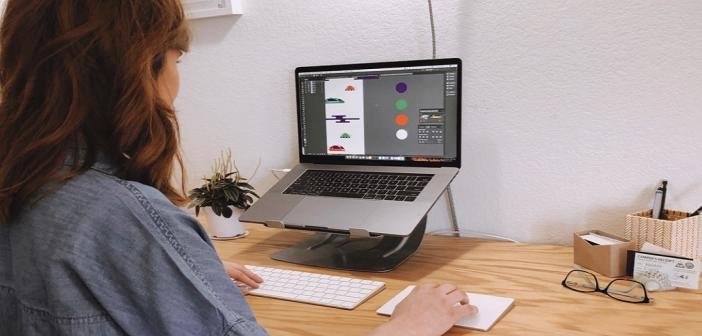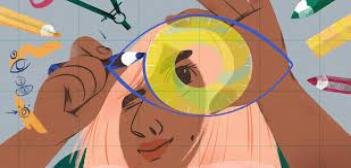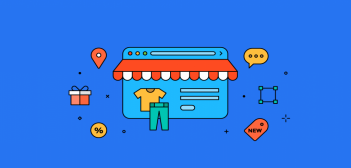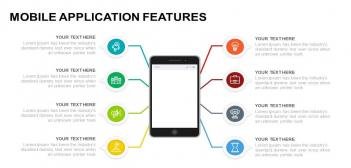Lately we often hear about the importance of digital product design. But do you know what digital products are and how many types are there? Today we are going to delve into this topic to help you know the main characteristics that they must meet in order to be successful.
General design and digital product design
All the objects that surround us are conceived starting from a design. Design is not only the aesthetic part, that is, what makes a product more or less attractive. Designing is a complex process that encompasses issues such as functionality and usability.
This is easy to understand with a simple mental exercise. How many times have you bought something because it was very nice but then realized that it was impractical? Well, that product didn't have a good design.
Designing implies finding a solution to a specific problem. The design phases are the identification of the problem, the conceptualization, and the search for a practical solution.
If we transpose this same concept to the digital plane, According to
Best Whiteboard Animation a good design is not one that has attractive colors and fonts. On the contrary, the digital design should favor the use of the product, be it an app, a video, a web page, an e-book or e-commerce.
To succeed with the design of digital products, two essential factors must be taken into account: usability and user experience.
Let's think about an example again. Do you remember how office programs were years ago? Sure, the main functions were the same as now, but they were much more difficult to locate and configure. Its usability and user experience has evolved to facilitate our daily work.
The principles of digital product design
Digital product design takes advantage of the foundations of industrial design and translates it to applications, web pages and other elements of the online world.
Industrial design, which reached its splendor in the 1950s, has one of its highest representatives in Dieter Rams, who established the 10 fundamental principles of good design:
1. Innovation
2. Utility
3. Esthetic
4. Understandability
5. Sobriety
6. Honesty
7. Timelessness
8. Precision
9. Minimization of contamination
10. Purity and simplicity
One of the main traces of his philosophy has been embodied in Apple products, which meet the bases of his work.
Well, all of the above is what should be reflected in the design of digital products.
Phases of digital product design
Usability and user experience are two of the keys to a good digital product, but there are more elements that participate in this process.
Let's see what they are:
1. Identify the problem
2. Create the solution as an added value
3. Simplify the product by providing only what the user needs
4. Design a consistent product
5. Facilitate actions
6. Lead the user to perform only one action at a time
7. Minimize the amount of information the user must provide
8. Use natural language without technicalities
9. Facilitate decision making
10. Reduce cognitive load
11. Establish a good visual hierarchy
12. Align the elements
And finally, create a measurable product that allows you to improve the design in an iterative way.
Sounds easy doesn't it? Well, in reality, many digital products do not follow these principles. This occurs when creators seek to design the best possible product instead of a product that solves the user's need in the best possible way.
This is the reason why many digital products fail. And, paradoxically, those who succeed are not the best but those who have the greatest acceptance. Why? Because users are looking for ease of use and simplicity.
To what types of digital products can we apply these principles? Actually, they should apply to everyone. For example:
• Video game
• Audio files
• E-books
• Downloadable manuals
• Video tutorials
• Software programs
• Web tools
• Mobile App
• Video files
• Online courses
• Magazines and digital newspapers
Any online or downloadable product must follow these principles to achieve maximum acceptance by users.
The conclusion is that the important thing is not the product itself but the mission it fulfills and how it does it. Because, in reality, the center of interest must be the user, their needs and their expectations.
How to get the design of a digital product right?
Now that you are clear that digital product design should focus on the user and not on the product, let's see how to make a truly successful design.
Understand the customer
In this first point we are not talking about the end user but about the client who wants to develop a digital product. Obviously, their needs and goals are not the same as those of the user, but they are equally valid. Therefore, you have to listen to him and understand him.
Conducting a complete briefing is essential to get to the bottom of the matter. From there, you can guide them on the best way to create a good product that sells and is useful.
Identify the target audience
The next step is to focus on the profile of the target audience for this product, that is, the end user.
It is the consumer who, ultimately, will give the go-ahead to the product. Therefore, it will be necessary to design thinking about it. What needs do you have, what are your knowledge of technology, how do you handle yourself in the digital world ... These are essential questions before approaching design.
Get involved in the process
Getting involved in the process means that you should not act with an assembly line worker mentality. You have to be creative, let your imagination flow, put yourself in the shoes of the user. In other words, you have to learn to see the product from the outside to understand what we are doing, how it works and what its differentiating characteristics are.
Create mind maps
Whether it's with a pencil and paper or your computer, designing a digital product should start with a mind map or sketch. Create the basic architecture of the product and correct until you are clear on where to start.
As you can see, the design of digital products is an exciting world in which we should not walk with preconceptions. At least that's how we conceive it. Each web page, each mobile app, is a unique and special creature with its own essence.







0 Comments